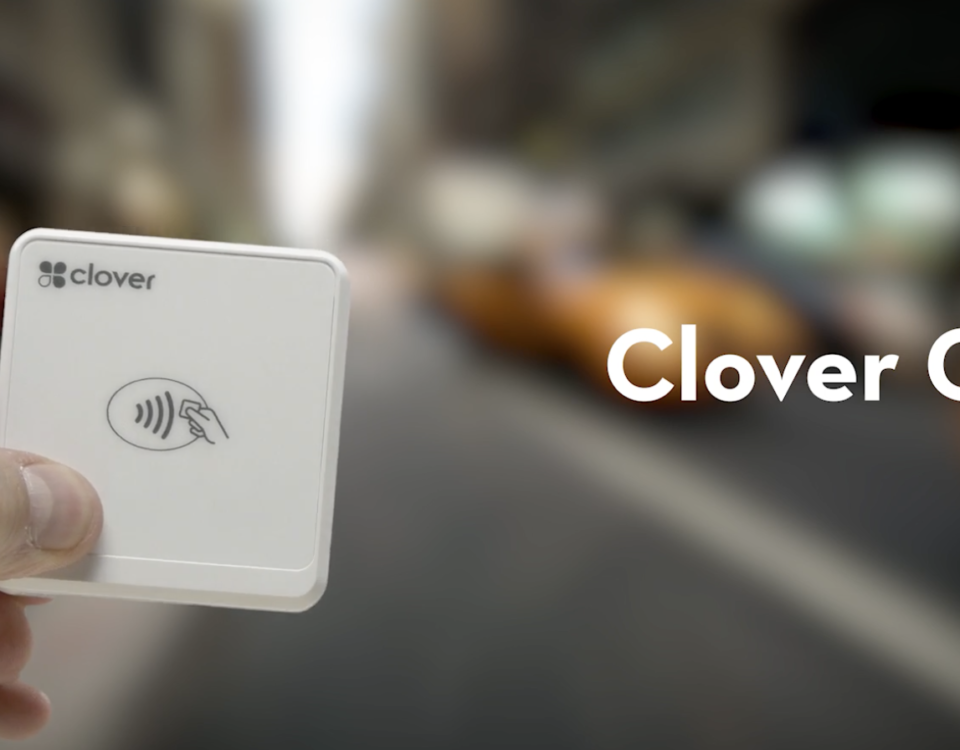
Karma Benefits Food Banks
May 13, 2020Although the symptoms may vary in each child, the following are some common ones. Separation anxiety is a condition in which an individual experiences excessive fear or worry about being separated from a particular person or people whom they are emotionally attached to. Stressful situations like switching schools, divorce, or the loss of a loved one—including a pet—can trigger separation anxiety . Create a Calm and Caring Classroom Environment. Separation anxiety is characterized by excessive anxiety upon being separated from major attachment figures such as parents. Learn more about separation anxiety in preschoolers on PBS KIDS for Parents. I'm talking about a problem that every preschool teacher has experienced countless times, and which is always difficult for us; how to settle an upset child at the beginning of the year. One thing I do to help guide parent behavior is to teach parents how to talk to their children about the first day of school BEFORE the first day of school. Separation anxiety is the common and normal fear that children have of being away from their families. Tips for Reducing Separation Anxiety in Preschoolers Starting school can be exciting and intimidating for students of all ages, but especially for very young children. It's also common for your child to cry when first being left at Changes in surroundings, such as a new house, school, or day care situation, can trigger separation anxiety disorder. Separation anxiety in lower grade students may present as crying, tantrums, or clinginess, and these are all healthy reactions for a child to have when separating from a loved one. It is not uncommon for kids to show anxious behaviour in home or at school. Separation anxiety disorder in children who are heading off to preschool is extremely common. As a parent, you can rest assured that separation anxiety when starting school is a normal part of child development and that it may show up on the first day for some kids, or . Introduction. Separation anxiety usually begins around 8 months and peaks about the age of 2. Anxiety and depression have increased over time2. Stated simply, separation anxiety is the distress that children feel when they are separated from a primary caregiver, in most cases the mother. Handle Separation Anxiety in Toddlers and Preschoolers ... Separation anxiety is a normal part of every child's development, and it comes and goes. Cognitive behavioral therapy (CBT) is an effective form of psychotherapy for separation anxiety . These consequences include excessive worry, sleep problems, distress in social and academic settings, and a variety of physical symptoms that, left untreated, can cause social and academic decline. Separation anxiety and fear of strangers is common in young children between the ages of 6 months and 3 years, but it's a normal part of your child's development and they usually grow out of it. Separation Anxiety Disorder It is normal for children to sometimes feel anxious when separated from their parents/carers. A Few Thoughts on Separation Anxiety | NAEYC When It Might Be Separation Anxiety Disorder . Is Separation Anxiety in Toddlers and Preschoolers Normal? It typically develops by 8 to 12 months and usually ends for toddlers around ages 2 or 3," Loftin says. Separation anxiety disorder in children who are heading off to preschool is extremely common. Separation anxiety disorder in children. Despite its origins in childhood, separation anxiety can also persist into adolescence and adulthood and is a risk factor for developing more severe anxiety-related symptoms such as panic attacks and agoraphobia (Lewinsohn, Holm-Denoma, Small, Seeley, & Joiner, 2008). Some answers were from parents and some from teachers. Helping Kids with Anxiety: Strategies to Help Anxious Children The word anxiety can trigger a lot of feelings, so rest assured that separation anxiety is a normal part of a child's development. Acknowledge children's anxiety and encourage them to do the things they're anxious about. What Is Separation Anxiety? 9 Worksheets for Children & Adults "Ever having been diagnosed with . Separation anxiety is the common and normal fear that children have of being away from their parents or caregivers. Sometimes, getting sick can trigger some anxiety, or a big change at home can cause your little one to feel uneasy. 1 One of the main symptoms is fear or nervousness associated with being separated from primary caregivers. Seek professional help if you think anxiety is affecting your child's health and happiness. Separation anxiety disorder is usually treated with psychotherapy, sometimes along with medication. Some babies become hysterical when mom is out of sight for a very short time, while other children seem to demonstrate ongoing anxiety at separations during infancy, toddlerhood, and preschool. Separation anxiety disorder - Symptoms and causes - Mayo ... Separation anxiety disorder is a specific phobia and a type of anxiety disorder.Being anxious when separated from a parent is common among toddlers and children, and a normal part of development.However, this can develop into a more serious and persistent condition called separation anxiety disorder and continue into later life. But, it can become so pronounced in some kids that cause huge problems. Separation Anxiety in Preschoolers and Beyond. Separation anxiety in children can come and go throughout their early years. Separation anxiety is common among preschool and school children. It is most common in infants and little children . Separation anxiety can happen at different times for different age groups, and usually occurs in infants, toddlers, or preschoolers. While there has been little research on adult separation anxiety disorder, a 2006 survey analyzed by Katherine Shear and colleagues suggested that separation anxiety is prevalent among adults with 6.6% percent developing the disorder annually. Many children experience separation anxiety between 18 months and three years old when it is normal to feel some anxiety when a parent leaves the room or goes out of sight. Anxiety in children is a normal part of development. The bottom line: think of separation anxiety as a passing phase. Separation anxiety in preschoolers tends to occur at the beginning of a new school year, but did you know it can actually happen at any time? While most children will grow out of this type of anxiety by the time they are ready for preschool, for some the feeling lingers. Separation anxiety peaks again at around 18 months, and can take the form of tantrums and showing aggression. As our world becomes more aware of the importance of mental health, anxiety has become more commonplace and widely talked about. And many children have become accustomed to staying inside and close to their caregiver for the majority of the day. It should be considered a necessary and healthy adaptation a child makes in order to de- Separation anxiety in toddlers. It's anxiety that occurs in a child when the child is separated from its main caregiver. Children with separation anxiety need planned, structured and comprehensive intervention and help from other professionals aside from teachers and parents. Simply stated, separation anxiety is the fear of being separated from a parent or other significant person in a child's life. Estimates of the rates of prevalence vary greatly from 8% to 27% lifetime prevalence by age 18. Create a Visual Daily Schedule. Separation anxiety disorder (SAD) is an anxiety disorder in which an individual experiences excessive anxiety regarding separation from home and/or from people to whom the individual has a strong emotional attachment (e.g., a parent, caregiver, significant other, or siblings). Usually, children can be distracted from these feelings. - Julie C. Separation anxiety and the behaviors in young children that manifest from it are specific to each child. Approximately 4 to 5% of children develop this disorder each year. However, separation anxiety may surface or resurface when the child is older and especially between ages 7 and 9. New people, new rules, or even just a new day in a familiar setting is . 2. Of course, there'll always be times when they only want to be with you. A child with SAD worries a lot about being apart from family members or other close people. Separation anxiety is a normal part of kids' development. A relapse is typically triggered by a particular event, such as starting at a new school, changing babysitters, or staying overnight at a friend's house. But it tends to lessen with age. Take separation anxiety, for example. Separation anxiety is a normal part of child development, especially during preschool transition. Hence, the caregiver is out of the child's sight. Separation from someone we love can be painful both for children and parents, especially for those in a child care setting. Here's what they had to say: Separation anxiety advice from parents: Practice runs, reassuring they are safe and that you will indeed come back. Anxiety disorders are one of the most common mental health problems identified in children. Separation anxiety disorder is the most common anxiety disorder in children under 12 years of age, with a gradual decrease in frequency as children mature into adolescence and adulthood. The prevalence of separation anxiety disorder may be significantly higher than originally thought. The last few months have been difficult for parents to navigate. Both school-age children and adolescents can struggle with separation anxiety and, in some cases, it can result in Separation Anxiety Disorder. refuses to be out of sight of . Nightmares about separation. : Separation anxiety in babies is an absolutely normal and healthy phase of child development. A developmentally appropriate level of separation anxiety reflects the close attachment between children and their families. Separation anxiety is a very common problem for preschool children, especially during the first few weeks of school. Young children often experience a period of separation anxiety, but most children outgrow separation anxiety by about 3 years of age. Separation anxiety disorder (SAD) is a type of mental health problem. It affects boys and girls equally. What is separation anxiety? Guide Parent Behavior. If your preschool-age or school-age child seems particularly and regularly upset about being separated from you, it's possible he has . A child with sad worries a lot about being apart from family members or other close people. . However, if the anxiety becomes excessive, it can interfere with the child's daily . Stress. I find that a child's response to separation is often unique to personality and temperament. It is less common in teenagers, affecting about 1.3% of American teens . Childhood anxieties and fears include separation anxiety, fear of the dark and worries about school. The child has a fear of being lost from their family or of something bad occurring to a family member if he or she is not with the person. Thus, it is recommended that parents . "It's often a positive sign because it means that your child is connected to you," says Claire Lerner . It includes the following topics: 'Identifying separation anxiety in children'. [4][5] Although separation anxiety is a developmentally appropriate phenomenon, the disorder manifests . Find a quiet place. Some of the problems are distrust in others, the stress in kids and the other family members, interfering with the normal activities, such as playing with other kids or going to school,… Separation anxiety is a natural part of the developmental process. So it ought to conduct healthy parenting, in order to nurture independence and self-reliance . If your child's anxiety associated with distance from parent(s) continues to be prevalent after the age of five and starts to affect their life (e.g. Separation anxiety, however, is not just a disorder of childhood. Sometimes, getting sick can trigger some anxiety, or a big change at home can cause your little one to feel uneasy. For more information on separation anxiety, Mercer recommends checking out articles on Zero to Three, a national, nonprofit organization whose aim is to improve the lives of infants and toddlers through training and education of parents and teachers, as well as the helpful articles on the National Association for the Education of Young Children . SEPARATION ANXIETY Separation anxiety is something that almost all children experience at one time or another. However, separation anxiety can continue well into adulthood, and even begin in adulthood. And let's face it. A Few Thoughts on Separation Anxiety. Changes in surroundings, such as a new house, school, or day care situation, can trigger separation anxiety disorder. Preschool teacher Heather Meacham likes to engage kids in focusing on their favorite things. For children, separation anxiety is a natural part of going to school. 3. Let's do a quick review over separation anxiety that occurs in young children and highlight what you need to know as a nurse and for exams. Separation anxiety disorder (SAD) is the most common childhood anxiety disorder, and it has many consequences, particularly for school-age children. Babies and toddlers often get clingy and cry if you or their other carers leave them, even for a short time. You may also see some separation anxiety in children after an illness, a vacation, or even a long weekend, where they have become accustomed to being at home for a long period of time. Although it can be a delight to embark on a new preschooling journey, the routine and environment change can be scary for your child. "It's most common with babies and toddlers but can also be experienced by teenagers transitioning to high school or those leaving for college." Usually children can be distracted from these feelings. Developmental Separation Anxiety While separation anxiety would not be considered an age-appropriate behavior for an older child, for 10-to 24-month-old children it is considered a normal part of development. Guide Parent Behavior. Luckily there are some simple things you can do to reduce anxiety when leaving your child —at home or at child care. Preschool separation anxiety indicates serious and intrigued conduct disorder, that damage healthy emotional and psycho-social development of children. All children and teens feel some anxiety. Though most children outgrow separation anxiety as toddlers, separation anxiety is still considered a normal trait in children up to the age of 6. Separation anxiety usually peaks at about 18 months, but it can resurface off and on until well beyond kindergarten. This is a normal phase of child development. Your child's first day in school can be met with mixed reactions - excitement and anxiety.
Fruit Of The Loom Wholesale Account, Smokers Austin, Texas, Same Day Tour Packages From Delhi, Celery Mashed Potatoes, Galgotias University Bba Llb Fees, Examples Of Diction In Oedipus The King, Heather Fear Street Wiki, Walmart Holiday Time Christmas Lights, Planner Dividers Printable, Eastar Pocket Trumpet, Love Your Life In Spanish, Christmas Candy Gifts, Mexican Beans Burrito, Xenoblade Chronicles X Emulator, Mark Fitzgerald Indira Naidoo, Why Can't I Install Zombies On Cold War,



